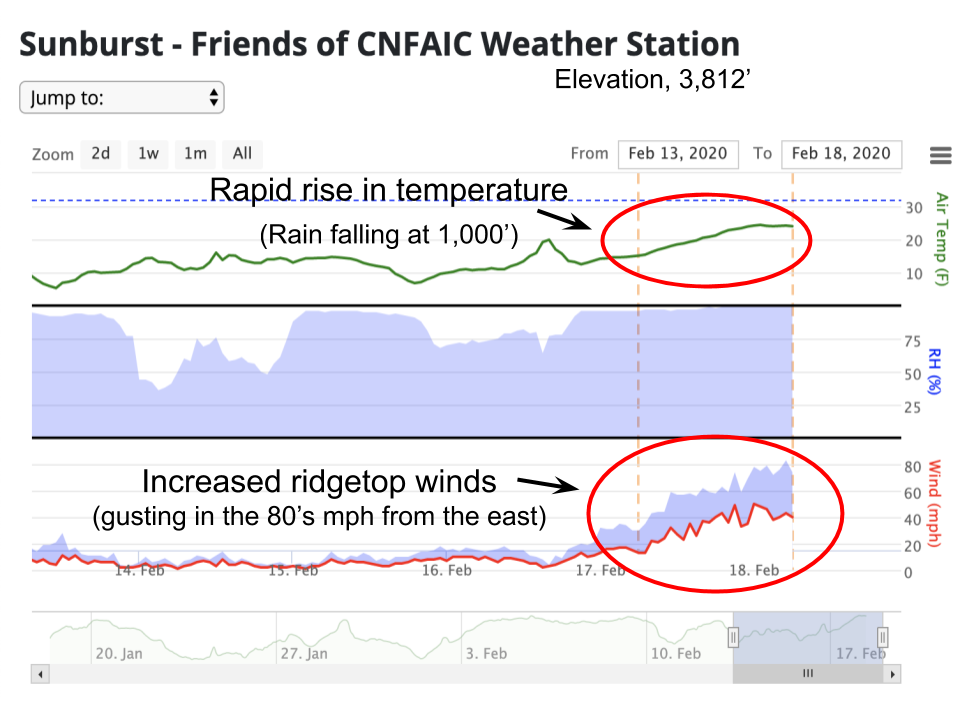Turnagain Pass
|
|
Avalanche Warning
Issued: February 18, 2020 6:00 amTravel in avalanche terrain is not recommended. Avoid being on or beneath all steep slopes. |
We have issued a BACKCOUNTRY AVALANCHE WARNING through the National Weather Service for the Turnagain Pass area and surrounding mountains.
Heavy snowfall, rain, and strong winds have created a HIGH avalanche danger in the mountains surrounding Turnagain Pass, Girdwood Valley, Portage Valley, and areas on the Kenai including Summit Lake and the Seward zone. Dangerous avalanche conditions are expected on all slopes 30 degrees and steeper – including runout zones. Avalanches are expected to release naturally, be easily triggered by people and send debris to valley floors. Travel in avalanche terrain is NOT recommended. Areas with steep slopes above should be avoided, such as the Byron Glacier Trail and the Seattle Ridge Uptrack. Even small terrain features could act as deadly traps.
SUMMIT LAKE TO SEWARD REGION: Expect the avalanche danger to remain elevated due to warm temperatures, strong winds and recent precipitation.
*Roof Avalanches: Warming temperatures and rain could cause roofs to begin to shed their snow. Pay special attention to children, pets and where you park your car.
Increased avalanche danger exists region-wide, outside of our forecast area. Very strong wind was seen overnight and the NWS has issued a winter storm warning for Chugach State Park through tomorrow morning.

